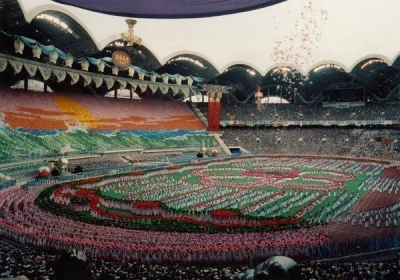
Only cities – and not countries – can be candidates to host the Games. This is intended to eliminate, as much as possible, governmental influence.
Before the city is chosen, a National Olympic Committee (NOC) makes sure that the city is able to provide all the staff and facilities to stage the Games. And an Organizing Committee is appointed to plan and oversee the entire operation – and to report regularly to the IOC.
The staging of the Games inevitably involves improving, modernizing, and sometimes changing the face of the city concerned.
For the Tokyo Games in 1964, the world’s longest stretch of monorail was built from the city’s Haneda Airport to the specially built National Stadium. Super-highways, subways and miles of new sewers were rapidly built – and 22 dilapidated main arteries were designated ‘Olympic Roads’, and were widened.
There was a similar situation in Seoul, where in 19 months thousands of acres of rice fields were turned into a concrete mini-metropolis containing the Olympic Park and Village. The work included a new air terminal, an access road, the Olympic Drive, and flats and temporary homes for 35,000 athletes, journalists – Press, radio and television – and officials. In addition, 200,000 visitors had to be housed in hotels or apartments. Private developers seized the opportunity to build 178 luxury high-rise apartment blocks near the two main Olympic centres. The apartments were put on sale for up to the equivalent of £90,000 each and were snapped up by their new owners – who rented them out for the Games and moved in afterwards.
Living space was at a premium during the 1960 Rome Olympics, when the Olympic Village was built on a 74 acre (30 hectare) site near a bend of the Tiber. It included a 4500-room apartment development designed to house 8000 athletes.
However, many of the 100,000 visitors to the Rome Games – who arrived at the newly built airport of Fiumincino at the rate of 6000 a day – were not as fortunate. They had to sleep in convents, monasteries and school dormitories, and camp out in the city parks and green spots. One camping place was even set up in the grounds of the Emperor Hadrian’s villa in the nearby hill town of Tivoli.
But the Olympic villages consist of more than just sleeping quarters and training facilities. There are also beauty parlours, cinemas, discotheques, boutiques, post offices, churches and cobblers’ shops – which do a brisk trade in repairing the athletes’ running shoes.
Picture Credit : Google
